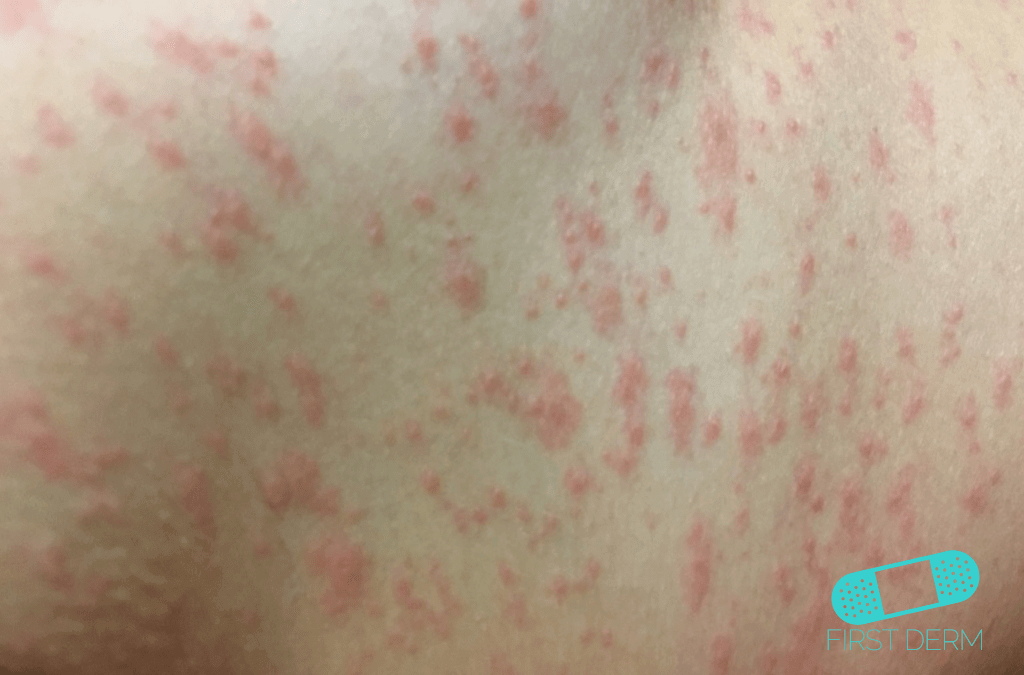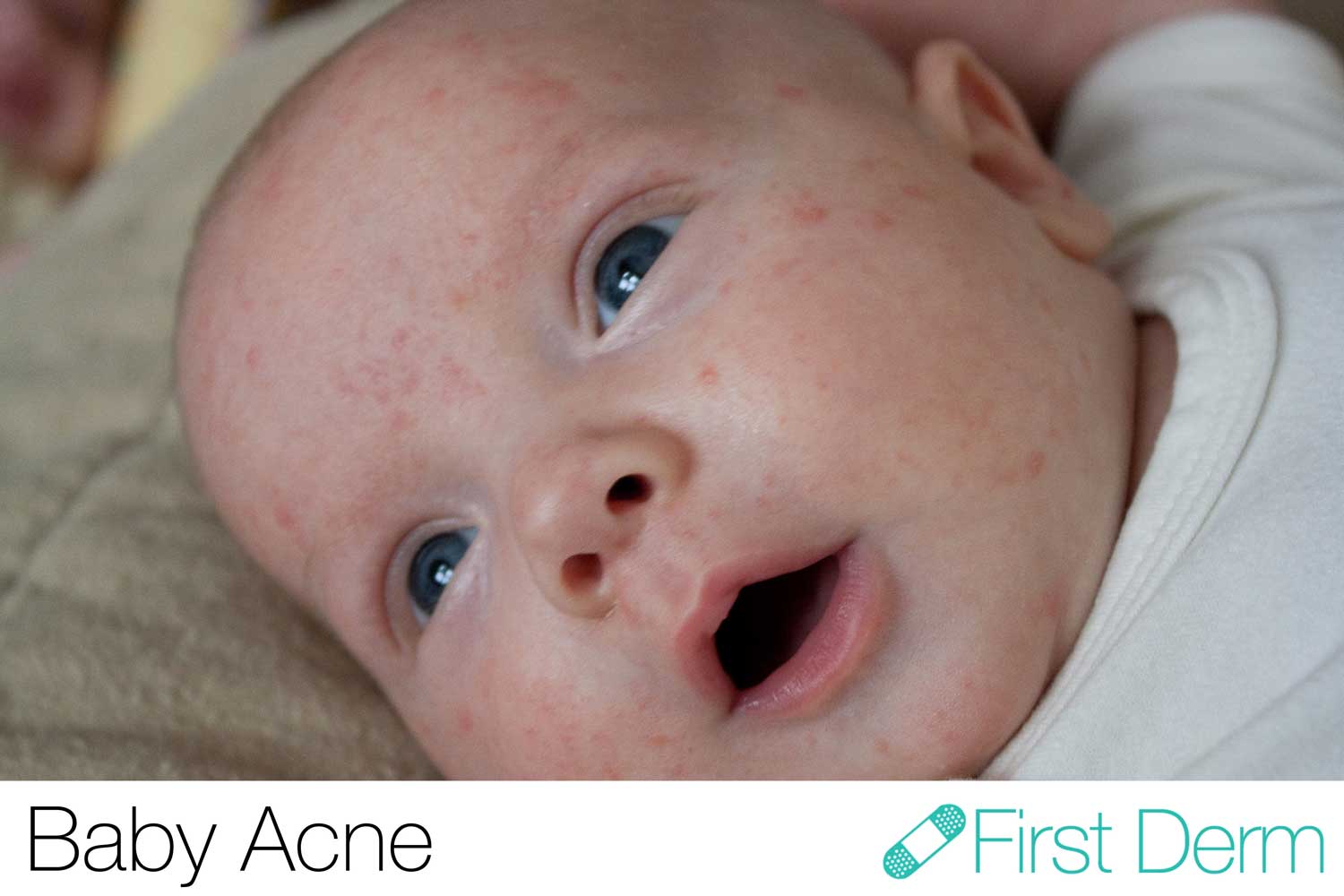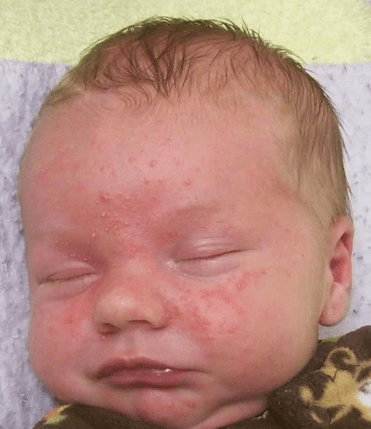Skin Care Advice For Your Newborn Baby

Protecting Your Newborn Baby’s Skin
Babies, newborns and toddlers get lots of skin problems like acne, eczema and other rashes. Fortunately, most of these rashes are harmless and go away on their own. Here we will detail the most common rashes, how to treat acne and some advice from our on-hand paediatrician and an online dermatologist.
Consult an Online Dermatologist with your babies (or your own!) skin concern today
- Typical Baby Rashes
- Baby Birthmarks
- Newborn Acne
- A Mother’s Experience of Newborn Acne
- Your Baby’s Skin in Summer
Don’t Panic
First and foremost.. It is almost inevitable that small children occasionally develop some red spots or a rash – it is very common during childhood. The majority are harmless so try not to panic. We know thats easier said than done but hopefully we can demonstrate how common that rash probably is!
It is extremely rare to see malignant skin lesions in children, says Magnus Rehnström, pediatrician at the Sahlgrenska University Hospital.
Let’s take a look at some of the most typical skin problems for children.
Viral Rashes
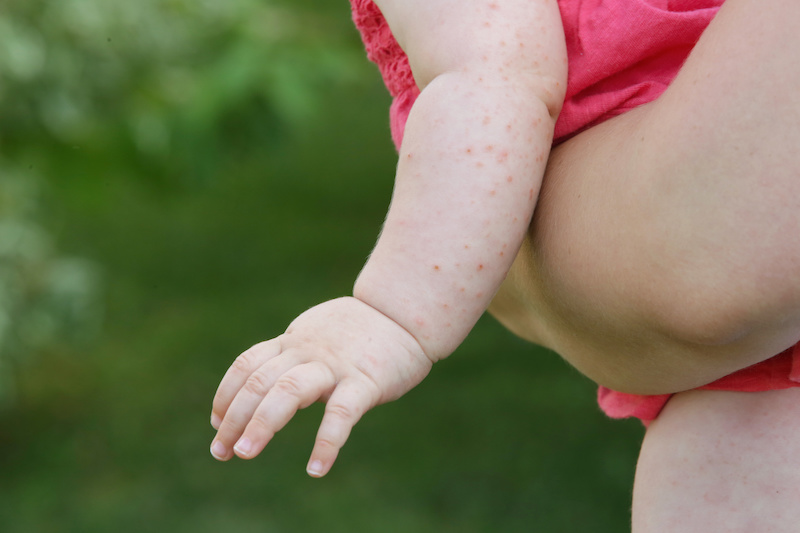
Viruses That Cause A Rash (Exanthem)
Suddenly emerging rashes that covers the body of the child are often due to a virus, such as chickenpox, the fifth disease, or three day fever (roseola). Often – but not always – the child can have other symptoms too, such as fever. A normal functioning immune system usually takes care of it and it goes away quickly.
Hives
Hives is another rash that can progress rapidly, and itch intensely. It can be induced by all kinds of things, such as a certain types of food, heat, an infection or insect bites. However, in most cases it is difficult to pinpoint the exact cause.
Hives can affect both young children and adults. A calamine lotion might help, but sometimes there is also a need for an allergy medicine, which you can get from your local pharmacy with or without a prescription.
If a child has a sudden rash, you may want to try to keep track of what your child ate at that particular moment, says Magnus Rehnström. There are some things that children are more likely to be sensitive to, for example, strawberries, peppers, seafood and oranges.
Consult an Online Dermatologist with your babies (or your own!) skin concern today
Sensitive Skin and Eczema
Eczema also known as atopic dermatitis often presents itself in newborns as red patches of itchy flaky skin. The cause of eczema is multifactorial and it often runs in families that are predisposed to conditions like asthma and seasonal allergies.
In most situations, eczema is not related to a specific allergy. Eczema can also be triggered by heat, soaps, and detergents as well as clothing.
“In infants,” as Dr. Porto explains, “eczema is most commonly seen on the face and scalp. As children get older, it is more commonly seen behind the knees and inside the elbows.”
In mild cases, diligent moisturizing and removing harsh skin products and soaps can be sufficient. However, in other cases a prescription may be needed to clear it up. If severe eczema presents itself see a doctor for further instructions. Eczema often gets better throughout life and may resolve completely in adulthood.
The Opinion of a Pediatrician
Children’s skin dries easily and can be chapped, and thus vulnerable to eczema, bacteria or fungi growth.
The best way to prevent dry skin is to avoid washing too often. Also, avoid soaps, oils and creams unless there is a real need for them. Plain water is enough to keep the skin clean in most cases.
There is no need for either shampoo or soap during the first two or three years, according to Magnus Rehnström. But you can actually create a need for these products by using them a lot – which fits cosmetics companies well.
Eczema is a different story, though. This is a kind of rash that needs frequent application with moisturizing creams.
Young children, for example, often develop eczema when they start eating eggs, milk or fish. Hypersensitive babies that are still breastfed may also develop eczema if the mother has eaten certain kinds of foods.
The sensitivity of the skin usually pass as the child is older. But as a parent, you can try to exclude the food that you suspect is causing the eczema for a period of time.
Atopic Eczema
So-called atopic eczema can be difficult to deal with. They are due to an inflammatory disease of the skin and can easily lead to a vicious cycle of itching and skin irritation. A child or newborn baby with atopic eczema may develop some other type of allergy as they get older, and even hand eczema when they are adults which can be a problem in different types of work where hands are exposed to an irritant.
The skin becomes red, thickened and itchy. Atopic eczema can often be seen around the eyes, the elbows, the knees. Some kids get this kind of eczema easier than others, and the tendency is partly hereditary.
Birthmarks – Brown, Red, Blue or Pink!
Contrary to what the name suggests, birthmarks can show up long after birth. For example, new brown spots – moles – can turn up throughout life.
Salmon Patches
Salmon patches (birthmark) present as red patches on a babies skin and are often located between a newborn baby’s eyes or on the back of their necks.
They are a group of capillaries that stay dilated causing the red appearance and are generally caused by the mother’s hormones. Yet, there is no need to fear. Salmon patches usually disappear by age 1 or 2 and occur in 70% of babies.
In rare cases they are permanent. Dr. Dennis Porto of First Derm notes that “salmon patches of the face almost always resolve while those of the neck are more often persistent. If their cosmetic appearance is bothersome, laser treatments can be used when the patient is older.”
“Stork bites” or “Angel Kisses”
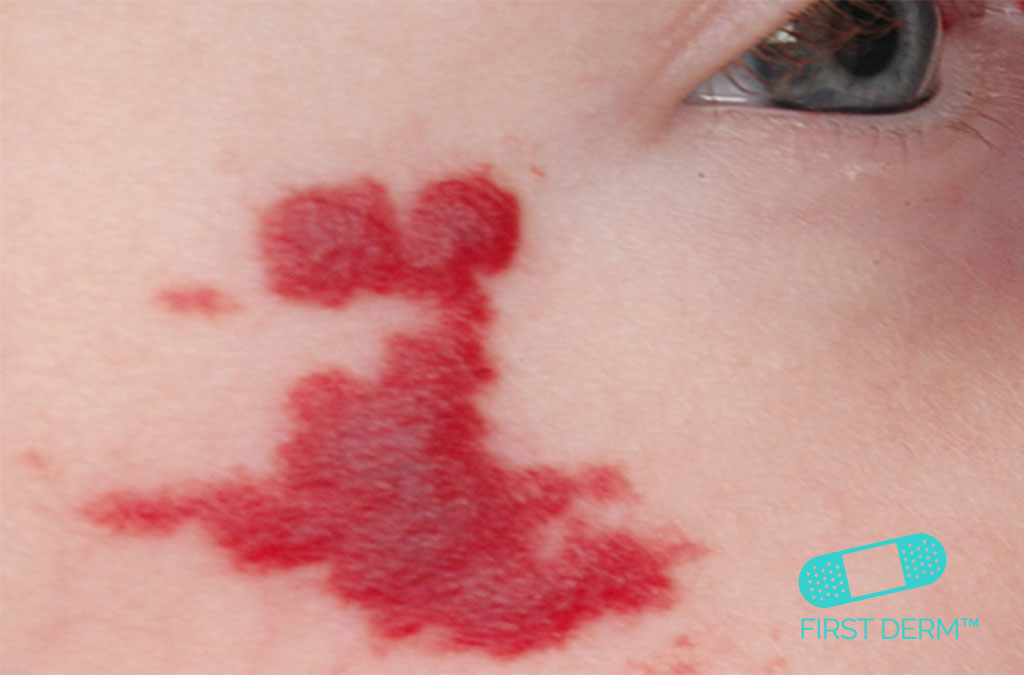
Hemangioma on face stork bite salmon patch ICD 10 D18
You may have noticed one of these names rather than ‘Salmon patch’. Fear not, it is the same thing! These marks are common, superficial vascular malformations that usually fade or disappear with age. However, there are other types of hemangioma, like the “portwine stain”, that do not usually vanish spontaneously.
Hemangiomas
Slightly different although similar to salmon patches. Hemangionmas can either be seen at birth or develop during the child’s first six to seven months of life. They are commonly known as strawberry marks, which are red and slightly raised patches. They usually disappear by themselves within a few years, says Magnus Rehnström.
Moles
In childhood moles are rarely dangerous. The kind of spots that sometimes develop into cancer are usually caused by sun exposure over many years, says Magnus Rehn Power.
Café-au-lait spots are a kind of birthmark that can be seen on areas with pigmented, light brown skin. Congenital or early birthmarks tend to grow with the child, sometimes up in the years of adolescence, after this, they normally do not increase in size.
Another type of birthmark is hemangioma, benign “blood vessel” that can be scarlet red, pink, or even bluish.
Cradle Cap
Also known as Seborrhea this frequently appears in babies under 6 months old. It appears in oil rich parts of the body (i.e. the head, ears or on the neck) and usually looks like greasy yellow scale on the scalp, behind the ears, and in the eyebrows.
Seborrhea is caused by a mild fungal infection. Dr. Porto remarks that “unlike eczema, seborrhea is not itchy and usually doesn’t bother the infant or newborn baby.” Anti-dandruff shampoo or over the counter hydrocortisone can be used for treatment, although caution should be advised using these on an infant without medical supervision.
Prickly Heat
Prickly heat is also known as miliaria rubra and more commonly known as heat rash. It presents itself in babies in the form of little red bumps that appear in the areas of the body that tend to sweat the most. This tends to be in the diaper area, neck, and armpits. Although uncomfortable for your newborn baby there are no serious side effects and treatment is easy.
Simply dress your baby in loose fitting clothing and get them out of the heat. Dr Porto advises that “avoiding occlusive creams and turning on a fan can help as well.”
Consult an Online Dermatologist with your babies (or your own!) skin concern today
Acne in Depth
Usually we associate acne with teenagers but it can also affect babies! In fact, newborn Acne is found in about 20% of babies and is similar to the acne that appears in teenagers and adults. It presents as multiple small pimples that are located on the face and neck. The most important thing to remember is do not pop or agitate these pimples. This could lead to infection, discomfort and often times scarring.
Use a gentle cleanser as ones that are made for teenagers and adults can often times contain harsh chemicals that will agitate the skin. Use warm water and pat dry affected areas. Generally newborn acne will clear itself up without any intervention from a physician. If your baby tends to scratch or pick at their acne a bacterial infection can occur.
Newborn Acne – A Mother’s Experience
No one’s really prepared for their newborn’s first rash. If you’re anything like me, when your first child was born, you were relieved to have survived pregnancy and birth, and astounded that –after nine months of hormonal havoc and anticipation – they wheeled you out of the hospital with a baby in your arms.
No one from security stopped you with questions. There were no parenting tests you had to pass. Most hospitals send you home with information books, lists of pediatricians (in case you didn’t thoroughly interview all those in your area before birth), and some spare diapers and formula.
In those moments in the wheelchair at discharge, I felt a mixture of excitement and fear. But, when I looked down at my newborn daughter’s sleeping face with her baby-soft skin, her peacefulness was a little contagious.
For the next couple weeks, whenever I felt stressed or scared or tired, just looking at her creamy skin, and inhaling her sweet smell calmed me. One morning, when my daughter was about 3 weeks old, she woke up with what looked like a pimple on her sweet, perfect little face.
Of course it was the day we had a newborn session booked with a photographer. I really didn’t expect skin imperfections for another dozen years. I considered my options. Was it really a pimple? Should I pop it? Buy zit cream? Use cover-up foundation? Throughout the day, in my sleep-deprived manic state, I went back and forth and finally canceled the photo shoot. It’s a good thing too – the single pimple multiplied exponentially over the next few days, spreading like ugly, puss-filled weeds.
What is Newborn Acne?
Finally, at our 4-week well-baby check, our pediatrician told me it was newborn acne. Apparently, the mother’s hormone levels cross the placenta right before birth, stimulating the baby’s oil glands. Many newborns develop acne at 3-4 weeks (though it can start before), and it usually goes away on its own by the time baby is about 6 months old. While there’s not much we can do to get the acne to disappear, there are many ways we can make it worse.
A hands-off approach to Newborn Acne
- Avoid popping, squeezing, or scrubbing the acne. As tempting as it might be, squeezing pimples causes irritation and inflammation, making them look and feel worse without actually speeding healing time.
- Use gentle cleansing products made specifically for babies unless otherwise advised by a pediatrician or dermatologist. Don’t use harsh acne cleansers meant for teens or adults.
- Laundry detergents, fabric softeners, baby wipes, and lotions may contain harsh chemicals that irritate your baby’s skin. Pay attention to what causes irritation and try to eliminate it from your routines (hint: this likely means your entire household should switch detergents).
- If your baby’s face seems dirty, wipe it gently with a warm, damp cloth and pat dry. You can do this up to twice daily if needed.
- Remember that newborns don’t get very dirty – you shouldn’t use soap every day. Wash baby’s skin with warm water and a mild, moisturizing (baby) facial soap several times per week.
- Pat baby’s skin dry gently – don’t rub!
- Keep in mind that newborn acne is natural, and quite common. Chances are, most people you meet won’t notice it nearly as much as you.
Baby’s Skin in The Summer
For those who have babies at home, summer also means taking further protection measures for the youngest ones of our family. We all love the softness and sweet smell of baby skin, but their skin barrier is thinner than adults, making it way more susceptible (1) and vulnerable to sun exposure during the hot summer months. In this post we’ll share a few important tips on how to protect your baby’s skin during summer, because we know that taking care of your little ones is your priority!
ALSO READ: Dermatologist Advice on Protecting Your Skin for further information.
Protecting your baby’s skin during summer

How to protect newborn baby skin during summer
1. Importance of the shade
Summer heat can be annoying for many people, and babies are not an exception. Babies are highly vulnerable to temperature changes, which is why we need to make sure they are kept cool in summer. Shade should be your new baby’s favourite spot these next hot months!
For infants under 6 months old, it is important not to expose them to direct sunlight, as their skin is too delicate and can get easily sunburned. When outside the house, cover their arms and legs with clothing – if possible light cotton and linen – and should always wear hats with and all-around three -inch brim. For extra protection, consider getting a buggy parasol.
For older babies and children, sun exposure should also be limited, specially when the sun is at its hottest. To protect your baby during summer is also recommendable avoiding sun’s hours of greatest intensity, around 10 am to 4pm. Make sure they wear cool clothes and a hat with a wide brim or a long flap at the back to protect their neck. Infants’ skin is very sensitive and avoiding direct sun to their skin is necessary.
Consult an online dermatologist 24 hours and get an answer on your skin concern.
2. Sunscreen, your new best friend
A bottle of sunscreen should be in your bag at all times during summer months. It has to become your new essential item!
Babies younger than 6 months old are not recommended to use sunscreen, as their skin is still way too delicate (2) (3). Is recommendable to keep them out of direct sunlight, protected by the shade of a tree or an umbrella. However, if full sun exposure is completely unavoidable, apply a minimal amount of high SPF broad-spectrum zinc oxide or titanium dioxide sunscreen to your baby’s face and at the back of his hands (4) (5).
Babies over six months old should have sunscreen applied every few hours, specially after going swimming. Choose a sunscreen with high SPF, preferably over 50+, to avoid getting sunburns that can cause eczemas. Cover all your little one and don’t forget any part of their tiny body. For young children, you can even make a game out of it!
3. Keep them hydrated
Who doesn’t enjoy a fresh cold glass of water after being outside on a hot summer day? It is extremely important to keep our little ones hydrated all day long (6) . Make sure that, whatever drink they are having (breastmilk, water, juice…), they have lots of it! (7)
For those older babies, having some fresh fruit such as melon or strawberries can also be a good way to keep them hydrated and cool. Also, it can be a good idea to carry a spray with water in your bag to refresh them and soothe the skin whenever is needed.
Consult an online dermatologist 24 hours and get an answer on your skin concern.
Consult an Online Dermatologist
If you’re worried about your baby’s skin and you have noticed something similar to the images in this post, chat to a dermatologist. We know this usually takes a long time but it couldn’t be more simple if you use our online dermatologist service. Simply send in an image anonymously as we’ll do the rest!
Ask a Dermatologist Now
Anonymous, fast and secure!

The Specialist doctor from the University Hospital in Gothenburg, alumnus UC Berkeley. My doctoral dissertation is about Digital Health and I have published 5 scientific articles in teledermatology and artificial intelligence and others.
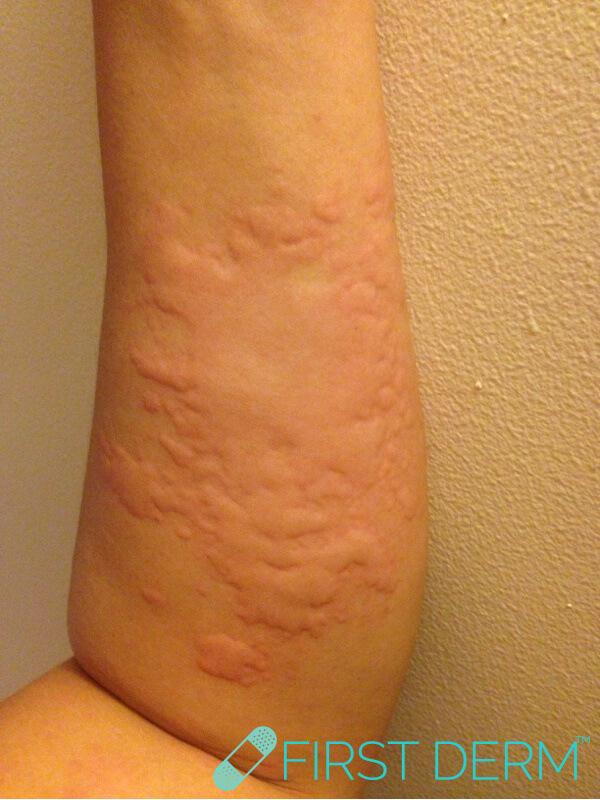

![Atopic Eczema (15) body baby [ICD-10 L20.9]](https://firstderm.com/wp-content/uploads/Atopic-Eczema-15-body-baby-ICD-10-L20.9.jpg)
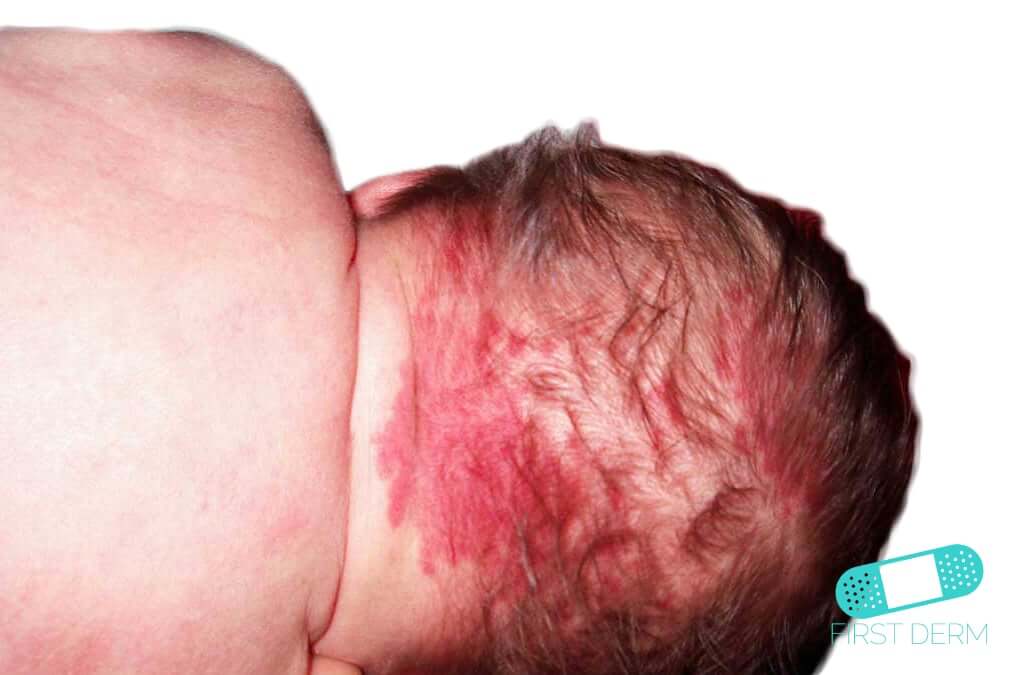
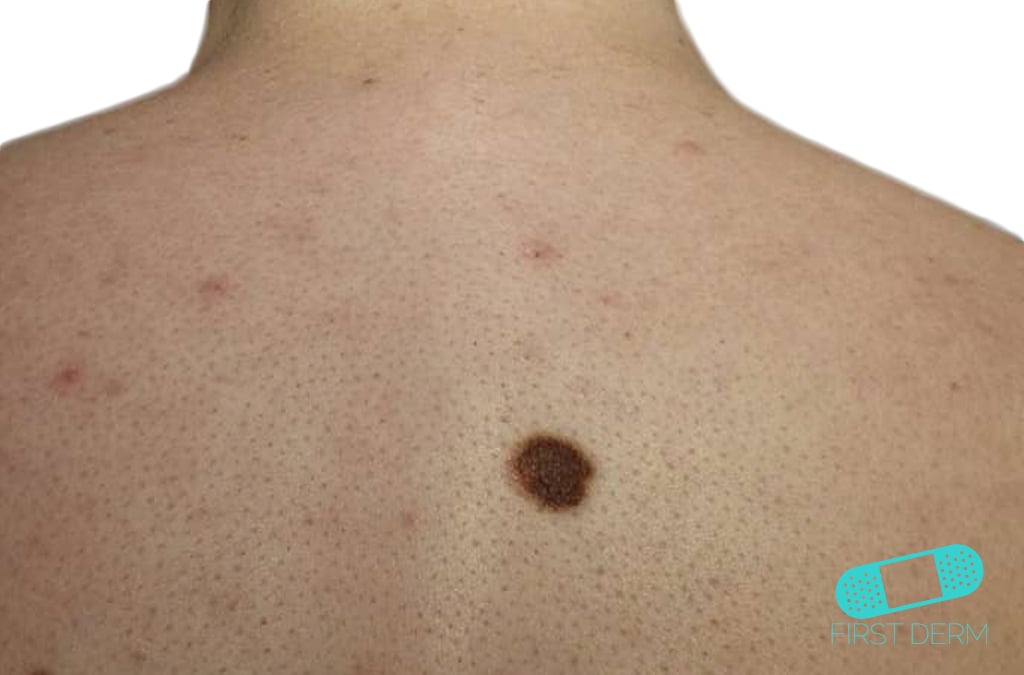
![Cradle Cap (Seborrheic dermatitis) (01) head baby [ICD-10 L21.0]](https://firstderm.com/wp-content/uploads/2016/03/Cradle-Cap-Seborrheic-dermatitis-01-head-baby-ICD-10-L21.0.jpg)
